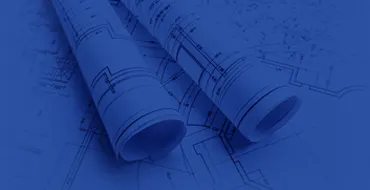Stormwater Management & Design
PJ Wright & Associates have extensive experience in the design of stormwater drainage systems for all regional areas and site conditions.
PJ Wright & Associates provides specialised, cost-effectively and efficient ‘engineered’ stormwater drainage solutions and designs that fulfil the National Construction Code of Australia and local authority requirements. We are fully conversant with all current legislation and research in the area of stormwater drainage.
Our design team considers all soil and site conditions, providing a stormwater design solution based upon ‘Best Practice’ design principles for your developments specific requirements. We design to the optimum requirements, ensuring a thorough ‘safety in design’ process that a critical storm risk analysis is performed for each individual site.
All design solutions are undertaken in compliance with the Stormwater Management Manual of Western Australian and local authority design specifications.
PJ Wright & Associates are aware from our years of experience in the business, of the potential damage and repair costs caused by poor roof and site drainage. When preparing a design solution, we take into consideration all aspects of each site including, overland overflow paths, soil types, groundwater, soil permeability tests and geotechnical engineer recommendations; as well as consulting with the local government authorities to ensure that the finished design meets all statutory requirements and disposes of all stormwater effectively.
PJ Wright & Associates will develop a stormwater management plan that will work effectively to reduce or eliminate the risk of damage to the project due to rain and stormwater ingress or flooding.
PJ Wright & Associates have experience in designing a wide range of stormwater systems including;
• Conventional Eaves, Valley and Box gutter systems
• Railheads, Sump, and downpipe sizing
• Soak well and drainage cell type infiltration systems
• Stormwater retention and detention systems
• Groundwater and rainwater harvesting and reuse systems
• Swales and sustainable disposal systems (Bioswale)
• Stormwater treatments including pollutant trap design
• Overland flow and minor flood mitigation systems
• Car park and hardstand drainage
Frequently Asked Questions
A stormwater management plan is required by Local Authorities to ensure storm events can be controlledby stormwater drainage systems.
The Building Code of Australia requires stormwater systems to avoid surfacewater to enter a building for a 1 in 100 year storm event.
A SMP can be in the form of a simple engineered stormwater design or a comprehensive report and detailed design. The type of SMP is dependent on the size and type of project proposed, regional or site specific environmental conditions, local or statutory policies or guidelines.
PJWAA undertake the preparation of SMP’s using current rainfall data, geotechnical information and ‘Best Practise Design’ principles. The design solutions address the critical storm durations for the site thus ensuring all storm events up to and including the 1 in 100 years are reviewed.
Applicable local and statutory government management policies are reviewed and specific treatments and procedures are assessed for suitability and adopted into the SMP.
The Water Corporation require trade waste designs to be prepared by Hydraulic Services consultants in order to ensure the drainage system and pre-treatments selected are correctly sized and fit for purpose.
Normal the test is undertaken after Development Approval is granted to confirm design limitations. PJWAA strongly recommend that the test is done before preparing any preliminary development drawings. This will ensure modifications can be incorporated into the project during concept design stage.
Modification can be in the form:
- Reduction is fire compartment size;
- Provision of additional access paths;
- Assessment of fire hose coverage;
- If tanks, pumps and internal hydrants are required; or
- An engineered fire solution needs to be prepared.
Many clients find that major modifications to approved development designs may result in significant increases in the project budget or delays in design development and documentation, both of which can be avoided with early professional advice or assessment.
All building construction requires coordination between trades. Anyone who has built knows that working between trades is very time consuming and in many circumstances results in the finer details being left to the tradies to sort out amongst themselves.
The hydraulics services design scope includes:
- Sanitary Plumbing;
- Hot and cold water;
- Stormwater drainage;
- Natural gas; and
- Wet fire services.
All these services must be coordinated by a single trades with not only the builder to avoid structural elements but power , lighting and mechanical services. By having a hydraulic services design prepared for your project ensures that this coordination occurs prior to any construction commencing. Reliance on contractors to ‘best guess’ potential clashes, may result in costly variations and delays in the project.




